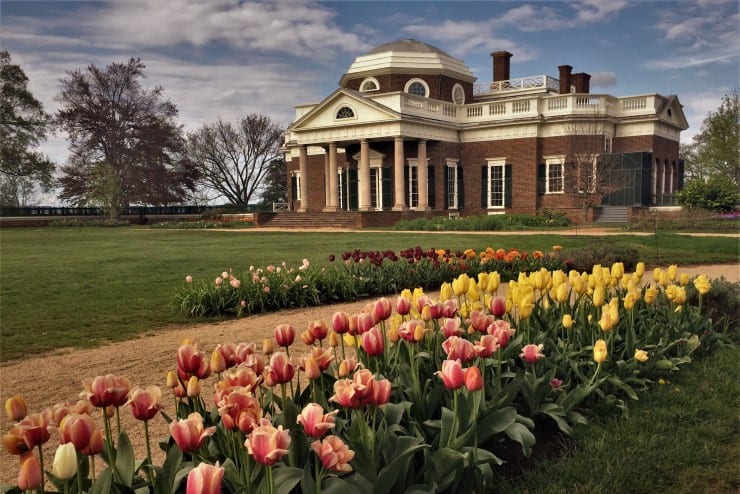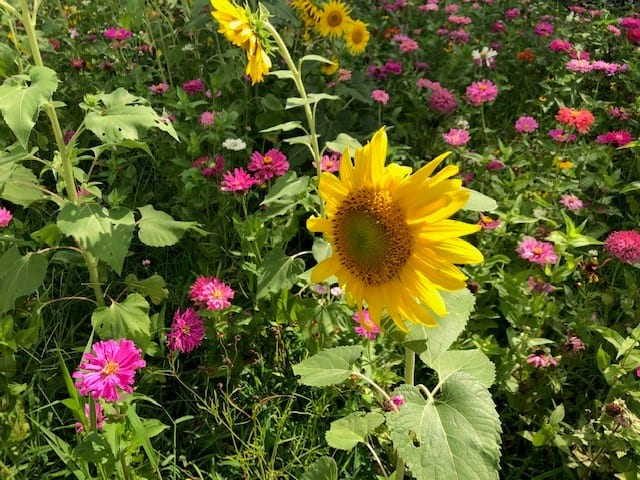Manicured Lawns – A Brief History
The concept of closely cut, well-kept grass areas in gardens premiered in the 1700s in England and France. The amount of maintenance required by these new garden features kept them strictly in the realm of the rich.

Thomas Jefferson was among the first to replicate European lawn styling in America at his Monticello estate. Other wealthy U.S. landowners soon followed suit, but front yards of the average working homestead stayed devoted to vegetable and herb gardens, or grazing animals. By the latter part of the century, however, front yard produce gardens moved to the rear as maintained grasses took their place.
In 1938, the Fair Labor Standards Act made a 40-hour workweek the new norm. Many Americans devoted newly free weekends to lawn enhancement, maintenance and ENJOYMENT?! World War II sidelined those efforts, but post-war prosperity saw renewed interest in the perfect lawn. Rotary power mowers surged in popularity and production, making large, well-maintained lawns possible for the country’s growing middle class. In the 50s and 60s, American suburb development exploded, and lush, green, manicured lawns grew in popularity.
Your Lawn Is A Food Desert

While these manicured lawns might be visually appealing to you, they are actually a food desert and offer little to no habitat for pollinators. Lawns also have other environmental costs. According to several sources, turf grass – not corn, is the most common irrigated crop in the country. To keep all that grass growing, 50 to 75% of the domestic water supply is used, adding up to over 20 trillion gallons a year. Lawns are also major sources of pollution from fertilizer and pesticide run-off—all for a type of landscape that doesn’t produce food or provide other critical economic benefits.
Down with Grass! – Not so fast….
Many cities/towns have ordinances against having anything other than turf grass maintained at a certain height on your property. But if you live outside the city limits, and you are not violating any HOA rules, why not turn some of your yard into a pollinator meadow? Not only will you be helping the pollinators, you will save yourself time, reduce pollution and conserve water.
Watch for Lawn to Meadow – Part II for easy to follow instructions. In the meantime, here is a little inspiration from my newly transformed front yard. The birds, bees and butterflies are abundant!



Hi, I’m Debbie Palmer. I received a BS in Horticulture from Purdue University. Here at LMEF, I am responsible for outreach presentations, monitoring the lake and it’s wetlands, project manager for restoration and research projects, and act as a community resource for all things related to the well-being of Lake Maxinkuckee and its surrounding watershed. I completed Indiana Watershed Leadership Academy, volunteer with the Indiana Clean Lakes Program, Hoosier River Watch and Marshall County Lakes and Waters and serve as a Board Member for Indiana Lakes Management Society.


This post reflects our yard philosophy. In our backyard, my husband planted a variety of trees, which have grown significantly over the past nine years. In the area where pipes do not allow for trees, we have our vegetable garden. Our front yard, going down to the lake, is actually a steep hill, with terraces that we kept (along with a lovely tall black oak), but my husband put in native plants, as well as blackberries and black raspberries, which make wonderful jam. Near the house, we have planted two blueberry bushes. He also planted some trees to replace the sassafras that had to be removed due to rot. Our plants attract bees, butterflies, and hummingbirds, which are a joy.
This sounds wonderful. I would love to come see it for myself sometime!